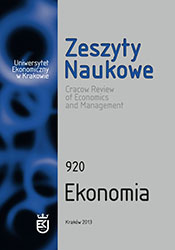Zarządzanie ryzykiem i jego dywersyfikacja w świetle teorii finansów behawioralnych a model Neumanna-Morgensterna
Risk Management and Diversification in the Light of Behavioural Finance Theory and the Neumann-Morgenstern Model
Author(s): Jacek PeraSubject(s): Economy
Published by: Wydawnictwo Uniwersytetu Ekonomicznego w Krakowie
Keywords: risk; diversification; Neumann-Morgenstern model; expected utility; investor
Summary/Abstract: Proper risk management ‒ based on the theory of behavioural finance ‒ will lead a rational investor to make the right choice preferences while estimating the minimal level of risk and receiving the greatest rate of return. One of the effects of risk management is diversification, which is also one of the main means of reducing the global level of risk. Diversification also contributes significantly to improving the long-term rate of return on an investment. Different utility functions are related to the tendency of investors to connect the level of risk and diversification with the level of expected revenue. The maximising utility is proportional to the value of money. Risk management and diversification agree with the John von Neumann and Oskar Morgenstern model.
Journal: Zeszyty Naukowe Uniwersytetu Ekonomicznego w Krakowie
- Issue Year: 920/2013
- Issue No: 20
- Page Range: 67-81
- Page Count: 15
- Language: Polish

